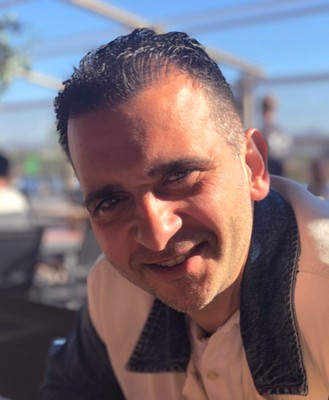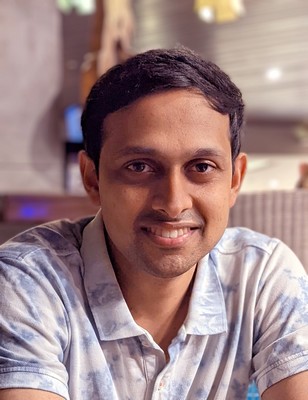Foutjes in camera’s helpen bij opsporen kindermisbruik
In een project gericht op het ontwikkelen van nieuw gereedschap om kindermishandeling tegen te gaan hebben computerwetenschappers van de RUG een systeem ontwikkeld dat de ruis van individuele camera’s kan analyseren. Deze informatie is te gebruiken om een video aan één specifieke camera te koppelen. De resultaten zijn gepubliceerd in de tijdschriften SN Computer Science (op 4 juni 2022) en Expert Systems with Applications (10 juni 2022).
Nederland is een van de grootste distributeurs van digitale media met kindermisbruik, staat in een rapport van de Internet Watch Foundation uit 2019. Om dit soort misbruik tegen te gaan zijn forensische technieken nodig waarmee het mogelijk is digitale beelden te analyseren en zo video’s of foto's waarin mogelijk kindermisbruik is te zien op te sporen. Een andere bron van informatie is de ruis in afzonderlijke videoframes of foto's. Binnen een EU onderzoeksproject hebben computerwetenschappers van de RUG en de universiteit van León (Spanje) een manier gevonden om die ruis uit een foto of video te isoleren en te analyseren, waardoor ze een ‘vingerafdruk’ krijgen van de camera waarmee het beeld is gemaakt.

Kogel
‘Je kunt het vergelijken met het patroon van groeven op een afgevuurde kogel’, zegt George Azzopardi, assistent hoogleraar in de onderzoeksgroep Informatiesystemen van het Bernoulli Instituut voor Wiskunde, Computerwetenschap en Kunstmatige Intelligentie van de RUG. Elk wapen produceert een specifiek patroon op een kogel, zodat forensische experts een kogel van een plaats delict kunnen koppelen aan een specifiek wapen, of concluderen dat twee kogels van verschillende plaatsen delict door hetzelfde wapen zijn afgevuurd.
‘Iedere camera heeft onvolkomenheden in de sensoren, die je terugziet als ruis in alle individuele frames, al kan dat niet zomaar met het blote oog’, legt Azzopardi uit. Op deze manier ontstaat een patroon van ruis dat specifiek is voor een camera. Guru Bennabhaktula, promovendus aan de RUG en de Universiteit van León, ontwikkelde een systeem om deze ruis uit de beelden te halen en te analyseren. ‘Voor beeldherkenning worden classificators gebruikt om informatie over vorm of textuur uit de beelden te halen, zodat het mogelijk is te identificeren wat er te zien is’, vertelt Bennabhaktula. ‘Wij gebruikten de classificators om de camera-specifieke ruis uit de beelden te analyseren.’

Opsporingsinstanties
Hij ontwikkelde een rekenmodel waarmee hij ruis uit beelden gemaakt met 28 verschillende camera’s kon halen. Die beelden komen uit een publieke dataset (VISION) en werd gebruikt om een kunstmatig intelligent systeem, een zogeheten ‘convolutional neural netwerk’, te trainen. Vervolgens keek hij of het systeem na deze training beelden kon identificeren die met dezelfde camera’s zijn gemaakt. ‘Dat bleek te lukken met een nauwkeurigheid van 72 procent’, aldus Bennabhaktula. Hij voegt er aan toe dat de ruis specifiek kan zijn voor een bepaald camera-merk, een specifiek type binnen dat merk en een individuele camera van dat type. In een ander deelonderzoek wist hij met een nauwkeurigheid van 99 procent 18 cameratypen te onderscheiden in foto's uit de publieke Dresden dataset.
Zijn promotieonderzoek is onderdeel van een EU project, 4NSEEK, waarin wetenschappers samenwerken met opsporingsinstanties om intelligente technologie te ontwikkelen voor de bestrijding van kindermisbruik. Azzopardi: ‘Elke groep in het project was verantwoordelijk voor een specifieke forensische techniek.’ Het model dat Bennabhaktula ontwikkelde kan in de praktijk worden gebruikt: wanneer de politie bijvoorbeeld een camera vindt bij een verdachte van kindermisbruik, kunnen ze die hiermee koppelen aan beelden die op informatiedragers zijn aangetroffen.

Uitdagingen
Het model is goed schaalbaar, vertelt Bennabhaktula. ‘Op basis van vijf willekeurige frames uit een video is het mogelijk om vijf video’s video’s per seconde te classificeren. De classificator in ons model is al door anderen gebruikt om meer dan tienduizend verschillende klassen te onderscheiden bij toepassingen voor beeldherkenning.’ Dit betekent dat het mogelijk moet zijn om met deze classificator de ruis van tienduizenden verschillende camera’s te onderscheiden. Het 4NSEEK project is inmiddels afgerond, maar Azzopardi heeft nog steeds contact met de opsporingsdiensten om hun onderzoeksresultaat verder te ontwikkelen. ‘We werken ook aan een analyse waarmee we paren van digitale beelden kunnen herleiden tot een gezamenlijke bron, wat weer nieuwe uitdagingen oplevert. Dat zullen we in een volgende publicatie beschrijven.’
Referenties:
Guru Swaroop Bennabhaktula, Derrick Timmerman, Enrique Alegre and George Azzopardi: Source Camera Device Identification from Videos. SN Computer Science 4 juni 2022
Guru Swaroop Bennabhaktula, Enrique Alegre, Dimka Karastoyanova and George Azzopardi: Camera model identification based on forensic traces extracted from homogeneous patches. Expert Systems with Applications, 10 juni 2022.
Meer nieuws
-
11 december 2025
Stormachtige planeten en een onverwachtse atmosfeer
-
09 december 2025
Faculty of Impact Grant voor nieuwe behandeling hersenkanker

